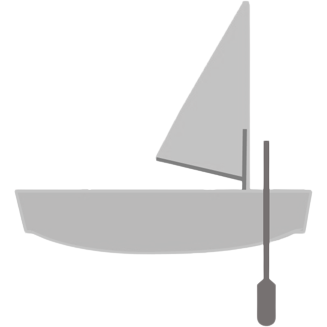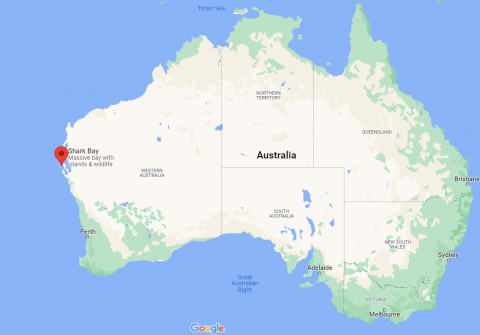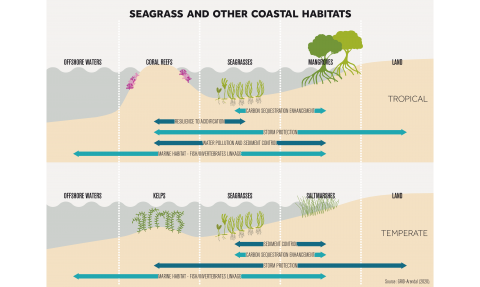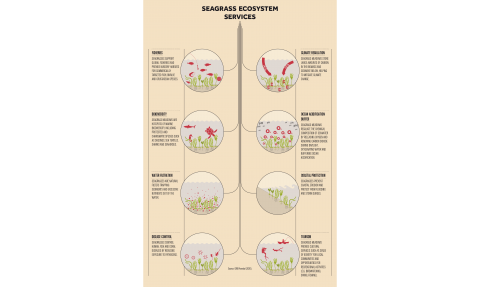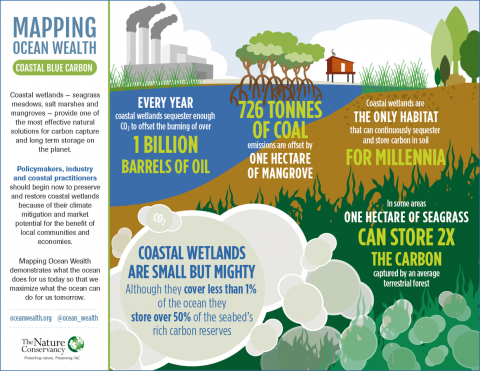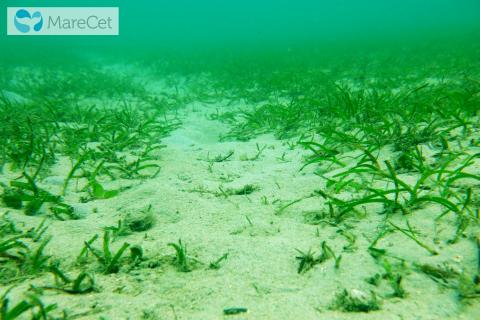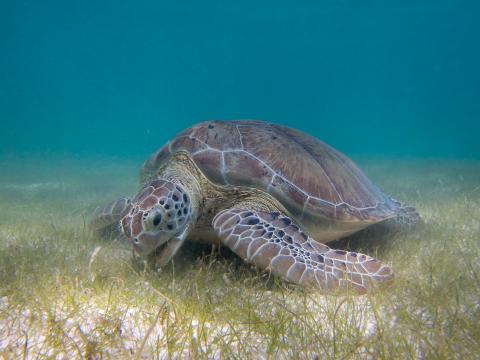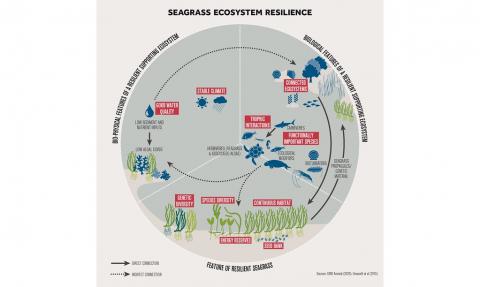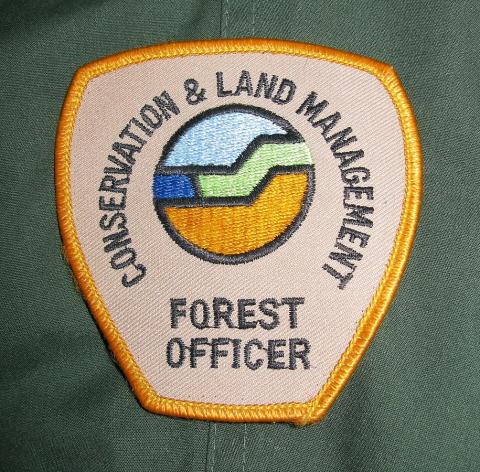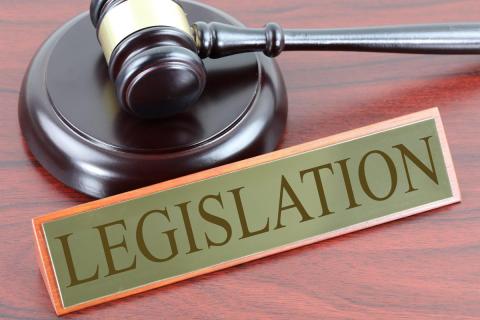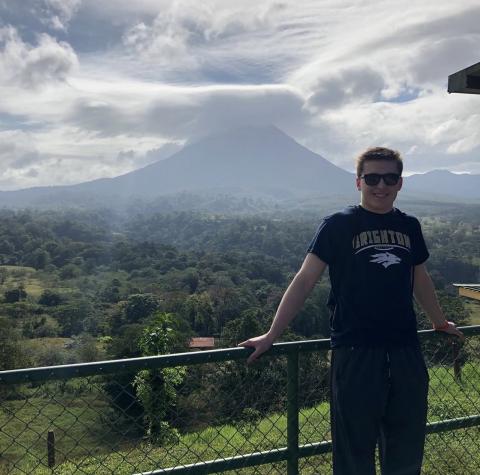2011 Marine Heatwave
- Scientists have concluded that seagrasses are key, habitat forming organisms and have been on a decline since a devastating heatwave occurred throughout Australia from 2011 to 2017 and led to high mortality rates among multiple seagrass species that had a rather large effect on the ecosystem of Shark Bay as a whole (IPCC, 2022; Pearce et al, 2011; Wernberg, 2020).
- During the 2011 marine heatwave that brought much harm to many ecosystems throughout Australia, 36% of Shark Bay’s seagrass meadows were damaged (Arias-Ortiz et al, 2018; Kajtar, 2021; Pearce et al, 2011).
For more than two months, the heat wave warmed the waters 2˚C-4˚C above the long-term average (Arias-Ortiz et al, 2018; Kajtar, 2021; Pearce et al, 2011).
Hazards
- Ocean warming and further extreme climatic events such as heatwaves are projected to continue with high confidence of damaging ecosystems and their biodiversity (IPCC, 2022).
-Seagrass contains substantial amounts of organic carbon stocks, and their preservation is threatened by extreme weather conditions that are a result of global climate change (Arias-Ortiz et al, 2018).
-High air and water temperatures caused a significant change in seagrass population in Shark Bay (IPCC, 2022). Major finding of this study suggest marine heatwaves are major threats to seagrass and other benthic communities (Styrdom et al, 2019).
-The major threat to these environments is the rising of ocean temperatures and with our current global emissions it is difficult to stop or slow the rate of warming (Jones, 2021).
Exposures
Carbon Dioxide Emissions:
- Carbon sequestration is a known factor when it comes to seagrass meadows (Nowicki et al, 2017).
-These meadows store large amount of carbon and when there is a disturbance and some portions of the meadows are destroyed, copious amounts of CO2 are released into the atmosphere (Nowicki et al, 2017).
Disruption of Energy Flow:
- In the areas of Shark Bay there is a bottom-up energy flow that begins within the seagrass (Heithaus et al, 2014).
- The seagrass provides food for herbivores such as dugong and sea turtles and those herbivores provide food for the apex predators of the ecosystem which are sharks (Heithaus et al, 2014).
- More specifically, tiger sharks in this environment (Heithaus et al, 2014). The bottom-up energy system provides the seagrass with natural protection by using sharks as a keystone species in this environment (Heithaus et al, 2014). The herbivores lessen the amount of seagrass in a controlled manner because the herbivores decline as they are used as food for the apex predators (Heithaus et al, 2014).
Vulnerabilities
-After the marine heatwave that threatened the waters of Shark Bay in Western Australia, there was an increase is loose sediments because of the damaged root systems of the seagrass meadows with a widespread of blooming of microbial organisms such as phytoplankton and other bacteria (Arias-Ortiz et al, 2018).
-These produced conditions that help aid the water with excess amounts of nutrients which accelerates and expands the opportunity for the damages meadows to emit substantial amounts of carbon dioxide into the atmosphere (Arias-Ortiz et al, 2018).
-With the numbers of the world’s global emissions, disturbances to these important megafaunal ecosystems are expected to become more frequent and more intense (Arias-Ortiz et al, 2018).
Green Turtle
The Green Turtle is an endangered species that inhabit the waters of Shark Bay in Western Australia. These animals inhabit seagrass meadow ecosystems and are vulnerable to the ongoing effects of global climate change. As the seagrass meadows are disturbed by marine heatwaves the Green Turtle species are greatly affected. Their food is lessened, their shelter is damaged and they are continually monitored by local protection agencies. As a result of climate change, the green turtle habitat is constantly being negatively affected which in turn, is keeping them in the category of an endangered species (Parks and Wildlife Service, n.d.)
Resilience
Seagrass meadows at Shark Bay are transition zones between tropical and temperate waters and ecosystems (Kendricks et al, 2019). Resilience, resilience to, and recovery are all key factors that must be addressed when researching a megafaunal community that is at high risk of being affected by continual and worsening global climate change (Kendricks et al, 2019). After the 2011 heatwave that stuck Shark Bay in Western Australia, there was research done with hopes to identify the productivity of A. antarctica resilience and recovery (Kendricks et al, 2019). After two years it was shown that there was no recovery of the losses from the “Ningaloo Niño” (Kendricks et al, 2019). In 2016, researchers were able to determine that some recovery had occurred (Kendricks et al, 2019). The majority of recovery was from other species but that little bit by A. Antarctica was not enough to represent functional ecosystem recovery (Kendricks et al, 2019).
Low Emissions Scenario: The maximum effects of future marine heatwaves are not likely to undergo a significant change and the level of intensity of the 2011 heatwave is likely to be a rare occurrence (Kajtar, 2021).
High Emissions Scenario: The maximum effects of the 2011 marine heatwave intensity is likely to become an annual event by 2100 (Kajtar, 2021).
Adaptations
Education
- Seagrass meadows are highly vulnerable to changing climatic conditions, the scientific community is upgrading their knowledge on the importance of these ecosystems and are working together to figure out more productive ways to conserve the meadows (Unsworth, 2019).
- The Paris Climate Agreement, the Convention on Biological Diversity and the Millennium Ecosystem Assessment are raising awareness and configuring new ways to equip these ecosystems with adaptations to help prevent catastrophic climatic issues from occurring in the future. (Unsworth, 2019).
-It is crucial to understand these changes as the world global temperature continues to rise and more disturbances are bound to come (Styrdom et al, 2019). It is vital for the survival of the seagrass meadows to understand and manage how large of an impact will be caused by future disturbances and to develop techniques to minimize potential catastrophic impacts throughout the ecosystem (Jones, 2021).
Legislation
- The parks that occupy space in Shark Bay are often viewed as controlled by government organizations that specialize in the conservation of these ecosystems impacted by climate change and human impacts (Jones, 2021). These groups have responsibilities to protect these areas under the CALM act (Conservation and Land Management) and it guides state legislature to enact services of protection for the area (Jones, 2021). They use land and water management techniques to attempt to protect the ecosystem from further disturbances (Jones, 2021). Research of seagrass ecosystems have shown promising effects of how genetic adaptations have made these types of ecosystems vital to the productivity of Shark Bay (Unsworth, 2019).
Mitigation
Examples (According to Jules Kajtar insight on marine heatwaves off Western Australia and their future projections) :
- Closing fisheries before or during a marine heatwave
- reducing catches after a major marine heatwave
- Seek longer lead time to have better preparation for a marine heatwave
About The Author
Ryan Watson graduated from St. Lawrence University in the fall of 2023 with an Environmental Studies major and a minor in Spanish. He chose to write about seagrass ecosystems located in Western Australia in Shark Bay. He spent a semester abroad in Spain in the spring of 2023 and participated in athletics for his four years attending the university. He is interested in pursuing a career working with conservation of vulnerable ecosystems regarding the ongoing threat of global climate change.
Sources
Aoki LR, McGlathery KJ, Wiberg PL, Oreska MPJ, Berger AC, Berg P and Orth RJ. Seagrass Recovery Following Marine Heat Wave Influences Sediment Carbon Stocks. Front. Mar. Sci. 2021.
Arias-Ortiz, A., Serrano, O., Masqué, P. et al. A marine heatwave drives massive losses from the world’s largest seagrass carbon stocks. Nature Clim Change 8, 338–344 (2018).
Fraser, M.W., Kendrick, G.A., Statton, J., Hovey, R.K., Zavala-Perez, A. and Walker, D.I. (2014), Extreme climate events lower resilience of foundation seagrass at edge of biogeographical range.
Heithaus MR, Alcoverro T, Arthur R, Burkholder DA, Coates KA, Christianen MJA, Kelkar N, Manuel SA, Wirsing AJ, Kenworthy WJ and Fourqurean JW. Seagrasses in the age of sea turtle conservation and shark overfishing. Front. Mar. Sci. August 2014.
IPCC (Intergovernmental Panel on Climate Change). 2022. AR6 Climate Change 2022: Impacts, Adaptation and Vulnerability. Technical Summary. February 2022.
Jones, J.S., Peter. A governance analysis of Ningaloo and Shark Bay Marine Parks, Western Australia: Putting the ‘eco’ in tourism to build resilience but threatened in long-term by climate change?. Marine Policy. Volume 127. 2021.
Kajtar, Jules. 2021. Marine heatwaves off Western Australia: future projections. Earth Systems and Climate Change. National Environmental Science Programme.
Kendrick Gary A., Nowicki Robert J., Olsen Ylva S. et al. A Systematic Review of How Multiple Stressors From an Extreme Event Drove Ecosystem-Wide Loss of Resilience in an Iconic Seagrass Community. Frontiers in Marine Science. Volume 6. 2019.
Nowicki RJ, Thomson JA, Burkholder DA, Fourqurean JW, Heithaus MR. Predicting seagrass recovery times and their implications following an extreme climate event. Mar Ecol Prog. 2017.
Nowicki R., M. Heithaus, J. Thomson, D. Burkholder, K. Gastrich, and A. Wirsing. Indirect legacy effects of an extreme climatic event on a marine megafaunal community. Ecological Monographs. 2019.
Pearce, A, Jackson, G, Moore, J, Feng, M, and Gaughan, D J. (2011), The “marine heat wave” off Western Australia during the summer of 2010/11. Government of Western Australia Department of Fisheries, Perth. Report Fisheries Research Report No. 221.
Strydom, S., Murray, K., Wilson, S., Huntley, B., Rule, M., Heithaus, M., Bessey, C., Kendrick, G. A., Burkholder, D., Fraser, M. W. & Zdunic, K. Too hot to handle: Unprecedented seagrass death driven by marine heatwave in a World Heritage Area. Global Change Biology
“Turtle Monitoring.” Shark Bay- World Heritage, Parks and Wildlife Services.
Unsworth, Richard, Unsworth-Cullens, C Leanne. A Call for Seagrass Protection. Science. 2019.
Wernberg T (2020) Marine heatwave drives collapse of kelp forests in Western Australia. In: Canadell JG, Jackson RB (eds) Ecosystem Collapse and Climate Change. Ecological Studies, Springer-Nature, accepted 1 Sept 2019.
